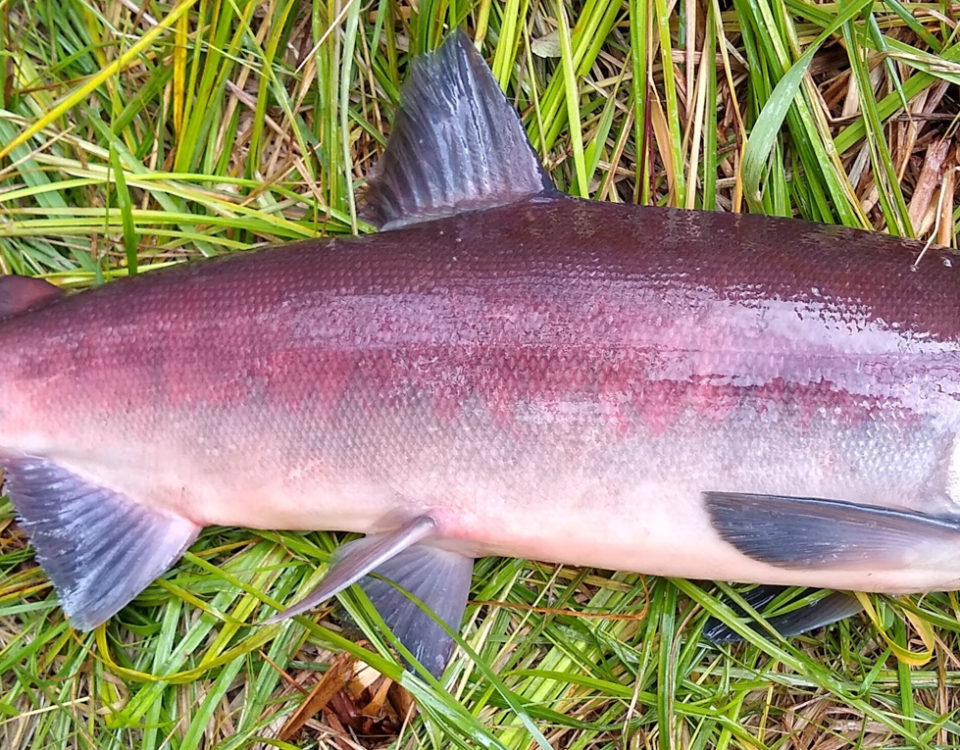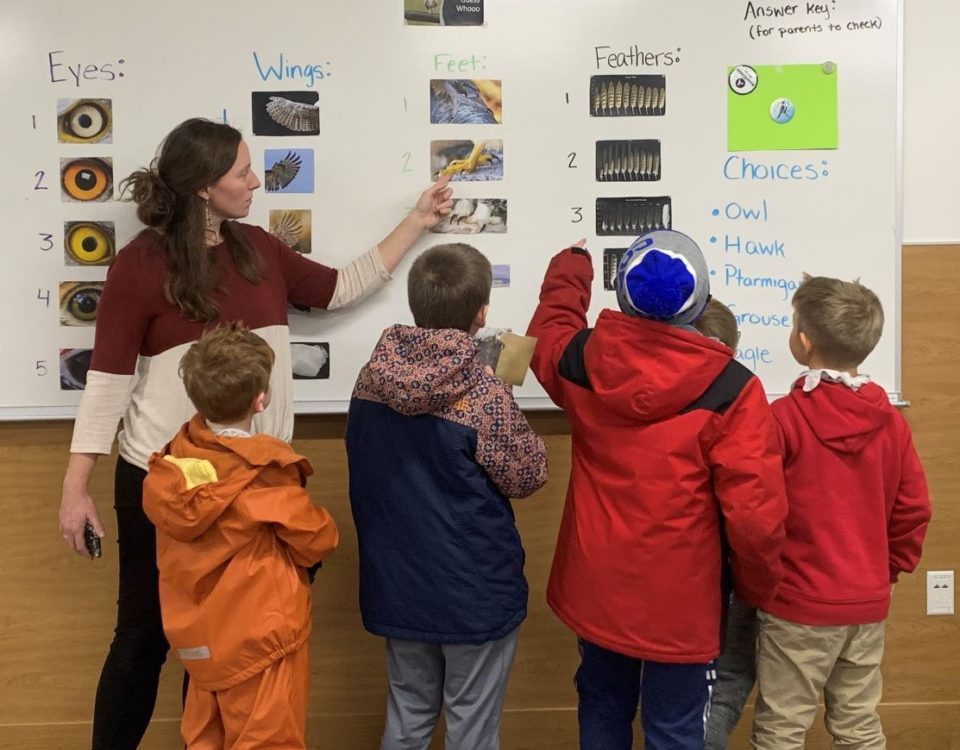Phytoplankton Monitoring
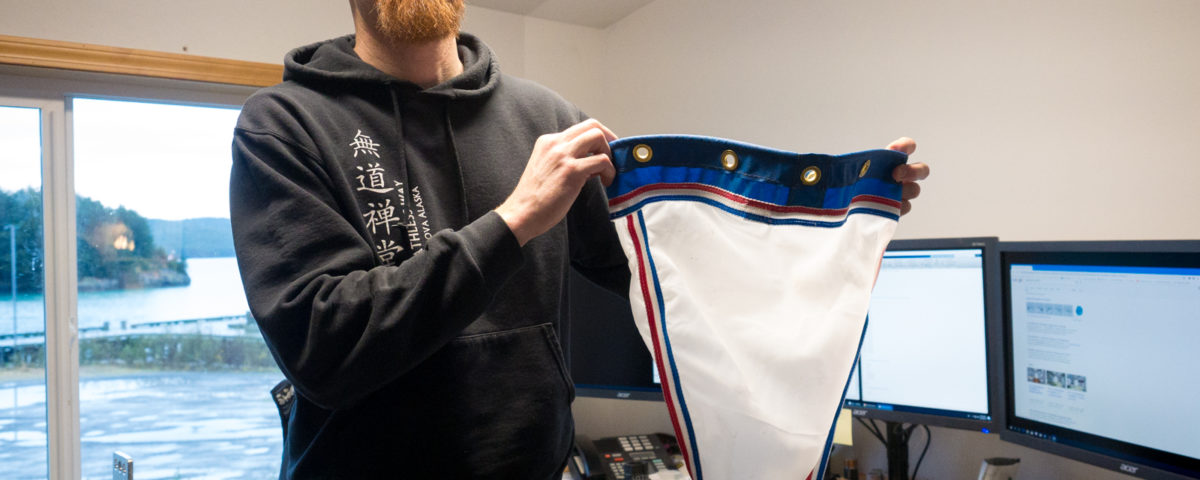
New Funding adds Phytoplankton Monitoring to Prince William Sound Oceanographic Monitoring Program
By Teal Barmore, November 5th, 2018
With new funding from the North Pacific Research Board, biological oceanographer Rob Campbell is putting together the tools to add phytoplankton monitoring to the regular oceanographic surveys that he does in Prince William Sound. With the help of research assistant Caitlin McKinstry, Rob measures basic oceanographic parameters (temperature, salinity, oxygen, and chlorophyll concentrations), as well as collecting zooplankton samples and water for nutrient analysis. The new funding will support additional zooplankton sampling to be tested for toxins and phytoplankton sampling for species identification.
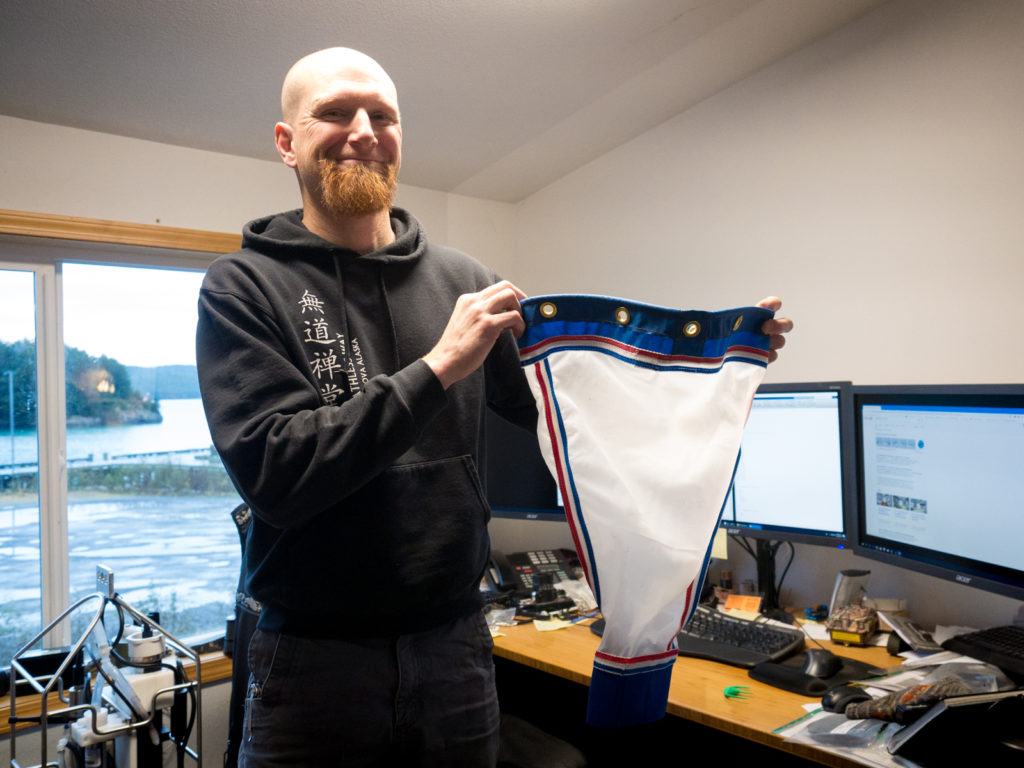
Rob shows off the fine-meshed net that he will use in his routine phytoplankton surveys. He will need to filter 15 to 25 gallons of water and concentrate it down to have enough sample to analyze.
The project has a special focus on a group of phytoplankton called dinoflagellates. You may have heard of dinoflagellates in reference to Alexandrium, the phytoplankton that produces toxins that cause Paralytic Shellfish Poisoning (PSP) and has caused beach closures for shellfish diggers in other parts of Alaska, the west coast, and beyond. Alexandrium is related to other dinoflagellates that can cause a red tide, a discoloration of seawater caused by high concentrations of the red pigmented phytoplankton. Although red tides are sometimes toxic, they are not always. The samples of red seawater that curious fishermen and citizen scientists have brought into Rob from our area so far have not been.

This is a Ceratium, a species of dinoflagellate that Rob printed a model of with his 3D printer. “Dinoflagellates are weird,” Rob says. They have flagella – hence the name – so they can do cool stuff like swim down to deeper water where there are more nutrients and swim back up to the surface where there is light, for photosynthesis, to get past limiting nutrients in the summer.
So why all the effort to look for toxic dinoflagellates in Prince William Sound when they haven’t been a problem? First of all, climate change. Rob wonders if Alexandrium might become more common with the warmer conditions we have been seeing lately. Second, Rob says, we want to see what’s there. There hasn’t been any regular monitoring of phytoplankton in Prince William Sound, which means that we don’t have a good idea of what species of phytoplankton are usually found there, much less what could be changing with warming waters. With phytoplankton playing an important role at the base of marine food webs, this project will help us understand how a changing climate is affecting the food system that all marine life depends on.
As far as Alexandrium is concerned, Rob expects that he will find the toxic dinoflagellate in some capacity. “It has probably always been around, but not at high concentrations.” Even though there are no known cases of sickness from PSP in Prince William Sound it could still be happening. According to Rob, if it’s in low concentrations there may have been cases where someone was sick but didn’t report it.
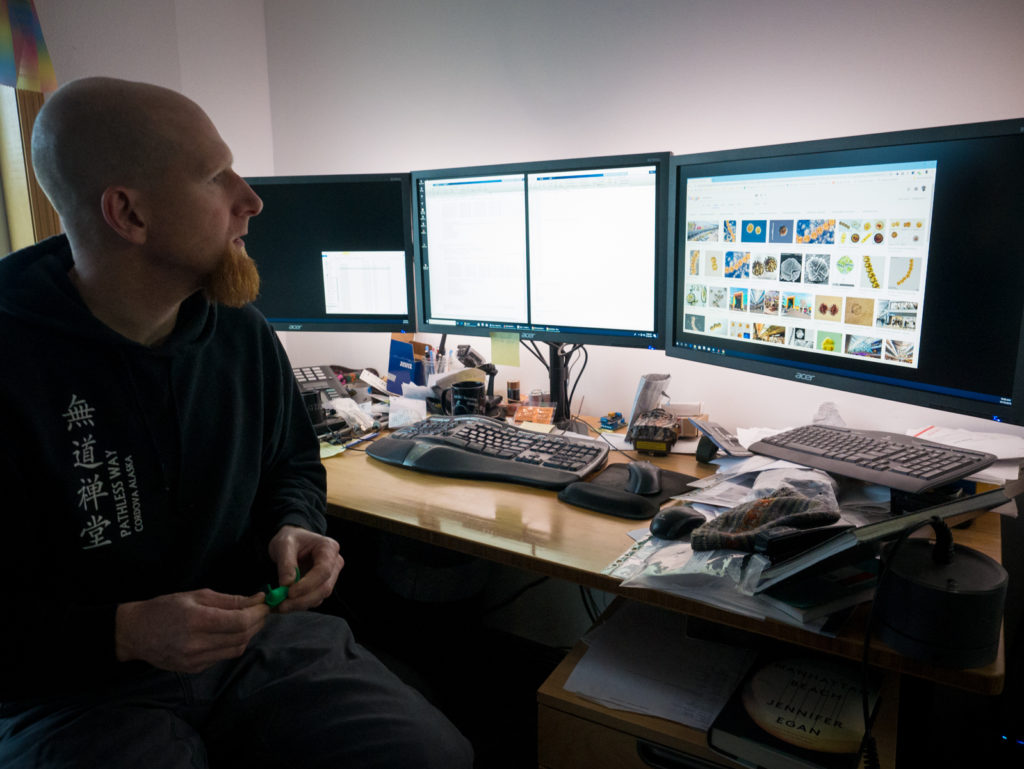
Rob looks at photos of Alexandrium on Google images. The plankton is round with cellulose plates that make up their cell walls, which are like wood or paper. A threadlike flagellum protrudes from their body to enable them to swim.
Rob won’t just be looking at phytoplankton for signs of PSP, he will be chasing it up the food web. Additional phytoplankton and oyster samples will be collected by local Simpson Bay shellfish farmer Jim Aguiar, and Ivy Patton from the Native Village of Eyak will be collecting local mussel samples from the Cordova harbor. Forage fish collected by colleagues who are doing surveys in Prince William Sound will also be sampled, as well as a small number of salmon, courtesy of local seafood processor Ocean Beauty.
Over the next few months, Rob will be gearing up to incorporate the additional water sampling into his surveys. He expects to have a system down by the time he starts his 2019 surveys in March. Samples will be sent regularly to Hatfield, Oregon for analysis of phytoplankton species and to the NOAA Beaufort Lab in North Carolina to be tested for toxins and Alexandrium concentrations. The results will be passed on to federal and state resource managers when they are available.


